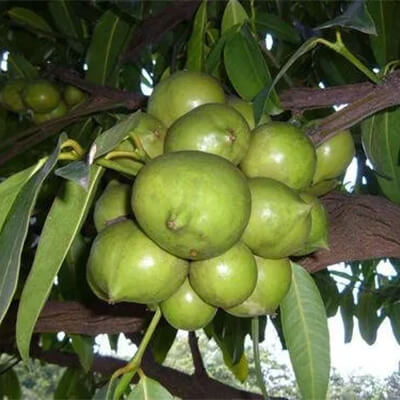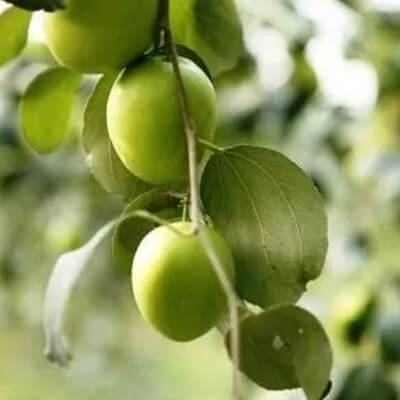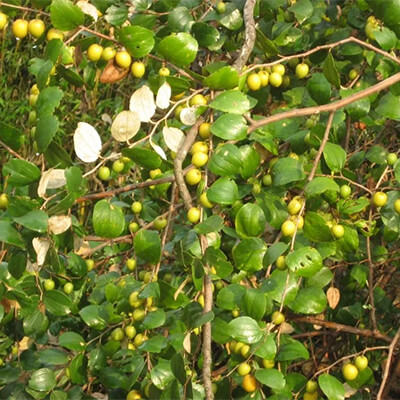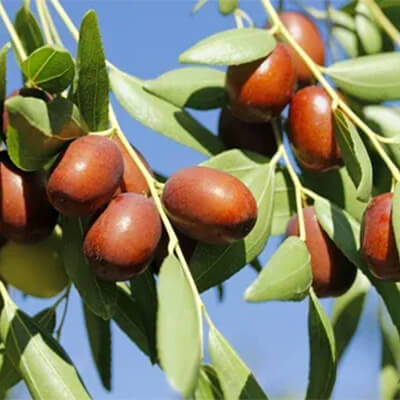On This Page
Amlavetasa – The Excellent Herb for the Disease of the Oral Cavity
Introduction
Amlavetasa botanically known as Garcinia pedunculata is an evergreen tree that is widely distributed in the semi-wild condition of the Northeastern part of India. Traditionally Amlavetasa is widely used in Assam for treating various disorders mainly gastrointestinal disorders. In the Northeastern region of India, the ripe fruit of Amlavetasa raw or fresh is cut into slices, sundried, and used due to various medicinal properties. The potency of these sliced pieces of fruit increases as it ages. In Ayurvedic classical medicine, Amlavetasa is a controversial drug. It is Amla (Sour) and Kashaya (astringent) in taste with Ushana Virya (hot potency). Recent research has proved that Amlavetasa exhibits anti-bacterial, anti-fungal, anti-diabetic, hepatoprotective, neuroprotective, and anthelmintic properties due to flavonoids, polyphenols, garcinol, hydroxy citric acid, etc, present in it.
Basonym of Amlavetasa
अम्लश्च असौ वेतसश्च |
Amlavetasa (Garcinia pedunculata Roxb.) has got a sour taste.
Synonyms of Amlavetasa
शतवेधी – शतं वेधितुम शीलम अस्य |
When to cut into small pieces, Amlavetasa has a strong sour taste.
सहस्त्र वेधी – सहस्त्रं वेधितुम शीलमस्य |
Amlavetasa if cut into a thousand pieces also will have an appreciable sour taste.
- Chukram
- Chukaraka
- Chankamla
- Vetasamla
- Bhima
- Amlabhedna- Nasaka
- Agnika Vetasa
- Rakta Sara- Raktasrava
- Dravi
- Varavetasa
Regional names of Amlavetasa
- Common sorel, Pomelo, Kokum tree, Mangosteen oil tree (English)
- Amlaveda (Hindi)
- Amlavetasa (Kannada)
- Nerinjampuli (Malayalam)
- Chuka (Marathi)
- Akkorakaro (Gujarati)
- Baikal, Thaikal (Bengali)
Botanical Name
Garcinia pedunculata Roxb.
The Word Garcinia is derived from the memory of Dr. Garcia.
Pedunculata means having the peduncle.
Family
Clusiaceae (Nagakesara Kula)
Ayurveda reference for Amlavetasa (Garcinia pedunculata Roxb.)
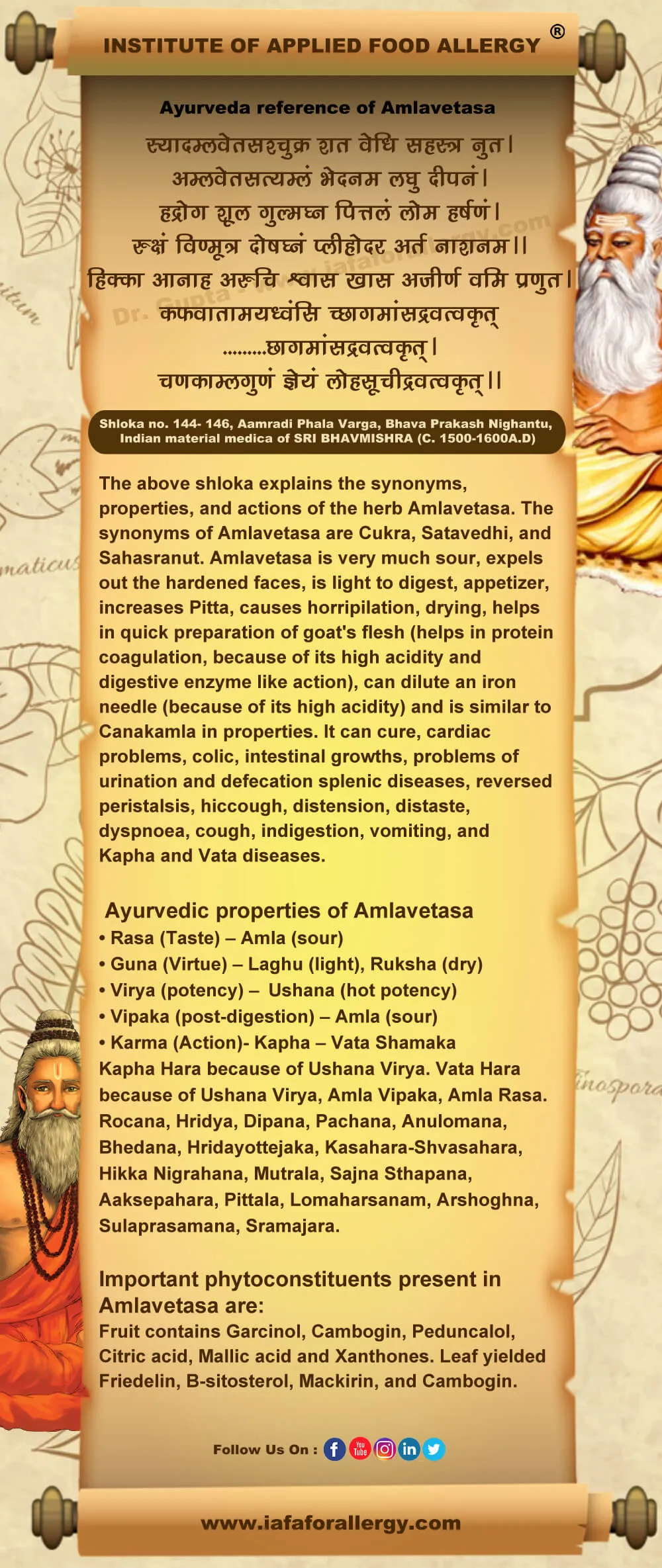
Scientific classification of Amlavetasa
| Kingdom | Plantae |
| Class | Dicotyledons |
| Subclass | Polypetalae |
| Series | Thalamiflorae |
| Order | Guttiferae |
| Family | Clusiaceae |
| Genus | Garcinia |
| Species | pedunculata |
Classification of Amlavetasa as per Charaka and Sushruta
- Charaka: Hridya Mahakshaya, Deepniya Mahakashaya, Swasahara Mahakashaya.
- Sushruta: In Sushruta Samhita Amlavetasa is mentioned in Amla Varga.
Amlavetasa’s description in Brihtrayi
| Charaka | Shusruta | Vagbhata (Ashtang Hridya) |
| C. S. Su. 2/ 28 | S. S. Su. 42/ 18 | A. H. Su. 10/ 25 |
| C. S. Su. 4/ 6, 10, 37 | S. S. Chi. 5/ 21, 28 | A. H. Chi. 3/ 61 |
| C. S. Su. 25/ 39 | S. S. Chi. 10/ 4 | A. H. Chi. 4/ 6, 28 |
| C. S. Su. 27/ 149 | S. S. U. 26/ 35 | A. H. Chi. 5/ 55 |
| C. S. Vi. 8/ 147 | S. S. Chi. 39/ 291 | A. H. Chi. 6/ 30 |
| C. S. Chi. 5/ 79, 85, 162, 165 | S. S. Chi. 42/ 27, 29, 32, 70, 94 | A. H. Chi. 7/ 37, 40 |
| C. S. Chi. 8/ 140 | A. H. Chi. 8/ 34, 146 | |
| C. S. Chi. 9/ 61 | A. H. Chi. 14/ 9, 17, 25, 32, 77, 111 | |
| C. S. Chi. 15/ 107 | A. H. Chi. 17/ 11 | |
| C. S. Chi. 17/ 86, 103 | A. H. Chi. 21/ 37 | |
| C. S. Chi. 18/ 126, 177 | A. H. Ka. 3/ 15 | |
| C. S. Chi. 23/ 79 | A. H. U. 20/ 5 | |
| C. S. Chi. 24/ 171, 175 | A. H. U. 22/ 81 | |
| C. S. Chi. 26/ 60 | ||
| C. S. Ka. 7/ 61 | ||
| C. S. Si. 9/ 24 |
Amlavetasa is an acid fruit according to Charaka. It has been described as similar to Vrikshamla (Garcinia indica) fruit but unlike the latter, it is purgative (Bhedaka ) in action. It has often been used together with Matulunga, a Citrus fruit. It is thus likely to be either a Citrus or Garcinia fruit. The fruit of Garcinia pedunculata is used as Amlavetasa in Bengal and Assam and almost everywhere else dried leaf stalks of Rheum emodi ( Revanda Chini) intertwined together and called Gucchi are in use. It might be noted that Vetasa is sometimes included among the five Kshiri Vriksa. Does it indicate that the name Vetasa now given to Salix species was also given to Garcinia which is also laticiferous? In any case, the consensus, at present, is for the acceptance of G. pedunculata fruit as Amlavetasa. The traditional use of Rheum stalks, however, may be allowed to continue as a substitute for it.
Amlavetasa’s description in Brihtrayi as Amla
Vagbhata: A. H. Chi. 1/ 134
Amlavetasa’s description in Brihtrayi as Vetasamla
Charaka Samhita: C. S. Chi. 12/ 53
Vagbhata: A. H. Chi. 14/ 32
Amlavetasa’s description in Brihtrayi as Vetra (controversy)
Vetramla has been explained to be either Amlavetasa (Dalhana ) or Vetra and Amlavetasa. Did the confusion between Vetra and Vetasa exist in the mind of Dalhana? The use of the term Vetra Amla for Vetra fruit is also another possibility. It has been mentioned among the group of acid fruits in S. S. Su. 46/ 139.
| Charaka | Shusruta | Vagbhata (Ashtang Hridya) |
| C. S. Su. 3/ 25 | S. S. Su. 42/ 18 (Phala), 18 (Kareer) | A. H. Su. 6/ 76 |
| C. S. Su. 27/ 3, 93 | S. S. Su. 46/ 139 (Phala), 262 (Kareer), 270 (Vetaagra), 432 (Aasava) | A. H. Chi. 1/ 7 |
| C. S. Vi. 8/ 150 | S. S. U. 12/ 18 (Vetra Amla) | |
| C. S. In. 5/ 29 | S. S. U. 47/ 40, 41 (Phala) | |
| C. S. Chi. 3/ 257 | S. S. U. 57/ 9 9Karrer) | |
| C. S. Chi. 4/ 37 (Vetaagra) | ||
| C. S. Chi. 12/ 61 | ||
| C. S. Chi. 27/ 26 | ||
| C. S. Chi. 29/ 51 | ||
| C. S. Chi. 30/ 255, 256 |
Historical background of Amlavetasa
Amlavetasa is mentioned under Phala Varga and Hridya Varga by Charaka. Its fruit is similar to that of Vrikshamla but not purgative. It is often used together with Bijapur. The fruit of G. pedunculata is used as Amlavetasa in Bengal & Assam. In other places, the dried leaf stalks of Rheum (Revandchini) are in use. Vetasa is another plant described under Kshiri Vriksa which is different from Amlavetasa.
External morphology of Garcinia pedunculata Roxb.
- Habit: Garcinia pedunculata is a tall tree that grows up to 60 ft in height. Branches are short and spread.
- Leaf: Obovate or oblanceolate shaped, 6 to 12 cm long and 3 to 5 cm broad, with short midrib and leathery texture.
- Flower: Flowers are light green.
- Fruit: Fruits are spherical or subglobose, 3 to 5 cm in diameter, yellow with 8 to 10 seeds. The pericarp is fleshy.
- Seeds: 8 to 10 in one fruit embedded in pulp.
External morphology of Garcinia indica Choiss.
- Habit: A slender tree with drooping branches.
- Leaves: Leaves dark green, young, red, membranous mucronate, rarely obtuse. Flower:
- Male flowers: Male flowers are 1-8, in axillary and terminal fascicles, buds at large as a pea; sepals orbicular, outer smaller, petals rather larger, stamens membranous 12-20 forming a short column, anthers oblong, 2-celled, opening longitudinally.
- Female flowers: Female flowers are solitary, short terminal, shortly and strictly peduncled, staminodes in 4 masses, ovary 4-8 celled, stigmas of so many lobes.
- Fruit: Fruits are spherical as large as a small orange, purple throughout not grooved.
- Seeds: 5-8, compressed, enclosed in an acid pulp.
Material of fruits in the market in brownish violet shreds.
External morphology of Citrus decumara
- Habit: A tree 30- 35 ft. tall.
- Leaves: Leaves are 6- 9 in., ovate, minute hairy, pointed.
- Flowers: Flowers are large and yellow-colored.
- Fruits: Fruits are big, like Tal fruits green color at immaturity stage and turning yellow when ripen, fruit pericarp thick, fruit pulp white, acid.
Flowering and fruiting time
Spring to the autumn season.
Distribution of Amlavetasa
Amlavetasa is distributed in the Western peninsula, Konkan Ghats, Canara, and
Malabar. (Garcinia indica)
Cultivated in Bengal and Assam (G. pedunculata)
Throughout India (Citrus decumara)
Substitute of Amlavetasa
- Rheum emodi
- Solena heterophylla
Controversy regarding Amlavetasa
Amlavetasa is one of the most controversial drugs in Ayurveda. Different species which are considered Amlavetasa are:
| DRUG (BOTANICAL NAME) | FAMILY |
| Rheum emodi | Polygonaceae |
| Solena heterophylla | Cucurbitaceae |
| Rumex vesicarius | Polygonaceae |
| Cissus repens | Vitaceae |
| Cissus vitiginea | Vitaceae |
| Ampelocissus latifolia | Vitaceae |
| Cayratia trifolia | Vitaceae |
| Hippophae salicifolia | Elaeagnaceae |
अम्लवेतस का वृक्ष वानस्पतिक दृष्टि से Garcinia pedunculata Roxb. (Clusiaceae) है और इसके अम्ल फलों को अम्लवेतस के रूप में ग्रहण किया जाता है। ये बंगाल में थेकल नाम से प्रसिद्ध है और विशेष रूप से पूर्वी देशो में होता है।
अम्लवेतस से Hippophae salicifolia Linn. (Elaeagnaceae) या इसकी किसी अन्य प्रजाति को ग्रहण करना चाहिए जो की लेह, लद्दाक में पाया जाता है (Himalayan region) और श्रमहर के लिए पेय के रूप में प्रयोग किया जाता है। (Because as per classical texts Amlavetasa belongs to Himalayan region, its fruits should be used that are very sour in taste)
विस्तृत वर्णन
चरक – आचार्य चरक ने अम्लवेतस का वर्णन निम्न स्थान में किया है –
Charaka Samhita Sutra Sthana 27/ 152 में फल वर्ग में वर्णित है जो इसका प्रयोज्य अंग फल है प्रमाणित करता है। फल वर्ग में इसके गुण कर्मो का भी वर्णन किया गया है।
Charaka Samhita Vimana Sthana 8/ 140 में अम्ल स्कंध में वर्णन किया है जो इसका अम्ल रस प्रमाणित करता है।
सुश्रुत –
Sushruta Samhita Sutra Sthana 42/ 18 में अम्ल वर्ग में अम्लवेतस वर्णित है, इसके अतिरिक्त सूत्रस्थान में हहिं इसका वर्णन नहीं है।
चरक की तरह फल वर्ग में अम्लवेतस का वर्णन तो नहीं मिलता परन्तु उसके स्थान में वेत्रफल का वर्णन है। फलों के विस्तृत वर्णन में वेत्रफल के गुण कर्म का वर्णन नहीं किया। ठीक उसे तरह वृक्षाम्ल के स्थान पर तिन्तिडिक का वर्णन किया है।
अम्लवेतस और वृक्षाम्ल का स्पष्ट उल्लेख केवल उत्तर तंत्र में मिलता है।
Sushruta Samhita Sutra Sthana. 12/ 18 में वेत्राम्ल से अम्लवेतस ग्रहण किया। वेतस और वेत्र को एक मान के ऐसा किया गया है। सुश्रुत के अम्ल वर्ग में वेत्र फल और अम्लवेतस दोनों वर्णित है।
वाग्भट – फल वर्ग में अम्लवेतस, वेत्रफल या वेत्राम्ल किसी का भी वर्णन नहीं मिलता।
डल्हण – वेत्र फल से कमल बीज का ग्रहण किया। (Sushruta Samhita Sutra Sthana 46/ 139)
संदिग्ध्ता
संदिग्ध्ता का कारण ये था कि वेतस और वेत्र को एक माना जाता था और लोक भाषा मे दोनो को ही बेंत कहा जाता था।
सोढल निघण्टु –
वेतसा नाम पादपाः तेषां फलेभ्यो निर्यासः सोम्लत्वादम्लवेतसः।। गद निग्रहः, भाग ३, कल्प अध्याय
आचार्य सोढल जी का कथन है कि वेतस नाम के वृक्ष के अम्ल फलों के निर्यास को अम्लवेतस कहते हैं।
मधुजम्बीररसप्रभः इसका रस निम्बु के समान बताते हुए कहा कि इसका रस इतना तीक्ष्ण होता है कि लकड़ी , लोहा, पत्थर आदि को गाल देता है पर लौकी को नहीं गालता। इस कारण से इसे लौकी के बाह्य आवरण के पात्र में रखा जाता है और इसका एक पर्याय अलाबुसुहत भी है।
यहाँ से संदिग्ध्ता उत्प्नन हुई कि क्या अम्लवेतस वेतस का फल है ?
यहाँ आचार्य का वेतस से अभिप्राय वेतस सदृश कोई वृक्ष होगा ,जिसके फलों का रस तीक्ष्ण होता है।
केयदेव निघण्टु – केयदेव ने अम्लवेतस का लक्षण वर्णन करते हुए कहा है कि ये चणकअम्ल कि तरह अम्ल होता है और बकरे के मांस को भी गला देता है। इस कारण से इसका पर्याय मांसारि भी है। इस से मलिन वस्त्र भी निर्मल हो जाता है। (Kaiydeva Nighantu Aushadhi Varga 324- 325)
भावप्रकाश निघण्टु – केयदेव निघण्टु के सामान वर्णन करते हुए इसे कफ-वात रोग शामक कहा है। (Bhava Prakasha Nighantu Phala Varga 146)
शिवदास सेन ने अम्लवेतस से थेकल लिया है। (द्रव्यगुणसंग्रह , फलवर्ग , ११)
Introduction to genus Hippophae
The Hippophae genus belongs to the Elaeagnaceae family. As per the classification reported regarding Hippophae based on morphological variation its 7 species and 9 subspecies are recorded, but is mainly comprised of 5 species that are as follows:
- Hippophae rhamnoides L.,
- Hippophae salicifolia D. Don
- Hippophae neurocarpa Liu & He
- Hippophae tibetana Schlecht
- Hippophae goniocarpa
From the above-mentioned species Hippophae salicifolia D. Don. yields a high quality of vitamin C. Various fruits and vegetables like citrus fruits, tomatoes, kiwis, etc are used as a source of vitamin c but none of them are at par with the high vitamin content of H. salicifolia. H. salicifolia is distributed in the Himalayan region between 1500- 3600 meters (in the Northwest regions of Himachal Pradesh). It is famous for the name sea buckthorn.
Vitamin C in different species of Hippophae
- Salicifolia- 2984 mg/ 100 grams
- rhamnoides- 230.5 mg/ 100 grams
- tibetana- 878.9 mg/ 100 grams
Hippophae is also rich in Vitamin A, B, B1, and polyphenols like kaempferol, quercetin, myricetin, glycosides, etc. Its seed oil is rich in Vitamin E. This plant exhibits various properties like antioxidant, anti-fungal, radio-protective, anti-inflammatory, anti-cancer, immune modulator, anti- bacterial, anti- sterility, anti-atherosclerosis, etc. Traditionally this plant is used to treat various disorders like asthma, lung disorder, menstrual disorder, gastric ulcers, cough, diarrhea, etc.
The useful part of Amlavetasa
Fruit
Important phytoconstituent of Amlavetasa
Fruit contains Garcinol, Cambogin, Peduncalol, Citric acid, Mallic acid and Xanthones.
Leaf yielded Friedelin, B-sitosterol, Mackirin, and Cambogin.
Recent research on Amlavetasa
- The bark extract of Garcinia pedunculata was screened for its antioxidant and in vitro antiplatelet aggregating activities by beta-carotene linoleate model for antioxidant assay acetone extract of Garcinia pedunculata exhibited higher antioxidant activity. Sharma A, Joseph GS & Singh RP. Antioxidant and antiplatelet aggregation properties of bark extract of Garcinia pedunculata. J Food Sci. Technol. 2014. Aug; 51 (8); 1626- 31.
- Antioxidant
- Antimicrobial activity
- Anti-diabetic activity
- Appetizer
- Hypolipidemic activity
- Anti–cancer activity
- Anxiolytic activity
- Anesthetic activity
- Anti-inflammatory activity
Rasa Panchaka of Akarakarabha
| Rasa (Taste) | Amla (sour), Kashaya (astringent) |
| Guna (Virtue) | Ruksha (dry), Laghu (light) |
| Virya (potency) | Ushana (hot potency) |
| Vipaka (post-digestion) | Amla (sour) |
Dosha Karma of Amlavetasa
Kapha – Vata Shamaka
Kapha Hara because of Ushana Virya.
Vata Hara because of Ushana Virya, Amla Vipaka, Amla Rasa.
Karma (Actions) of Amlavetasa
Rocana, Hridya, Dipana, Pachana, Anulomana, Bhedana, Hridayottejaka, Kasahara-Shvasahara, Hikka Nigrahana, Mutrala, Sajna Sthapana, Aaksepahara, Pittala, Lomaharsanam, Arshoghna, Sulaprasamana, Sramajara.
Prayogarha Vyadhi (Therapeutic indication) of Amlavetasa
- Aruchi
- Arochaka
- Bhakta Vesa
- Agnimandya
- Ajirna
- Vibandha
- Vistambha
- Gulma
- Anaha
- Adhmana Shula
- Vamana- Utklesa,
- Udara Roga
- Udavarta
- Yakrida
- Pliha Vriddhi Vikara
- Hriddourbalya
- Hritrshula (Udavarta Janya)
- Kasa
- Shvasa
- Hikka
- Pratishyaya
- Murccha
- Kampa
- Aaksepa
- Vata- Nadi Vikara
- Mutrakrichantak
- Ashmari
- Arsha
Aamyik Paryog (Therapeutic uses) of Amlavetasa
Gulma (Abdominal tumor):
- Powders and pills prescribed for Vatika Gulma are useful in Kaphaja one if added with a double quantity of Yavakshara, Hingu, and Amlavetasa. (Charaka Samhita Chikitsa Sthana. 5/ 162)
- Powders and pills prescribed for Vatika Gulma are useful in Kaphaja one if added with a double quantity of Yavakshara, Hingu, and Amlavetasa. This formulation (removes Kapha and) stimulates the digestive fire. (Ashtanga Hridya Chikitsa Sthana. 14/ 76)
- For the patient of Gulma, the diet should be processed and made palatable with Bijapur, Hingu, Amlavetasa, Yavakshara and Dadima, buttermilk, oil, and ghee. (Charaka Samhita Chikitsa Sthana. 5/ 166)
Udavarta (Upward movement of Vayu): In the case of Udavartta (upward movement of Vayu) and flatulence the food should be mixed with Matulunga and Amlavetasa and also with Hingu, Pilu and Bida. (Charaka Samhita Chikitsa Sthana. 17/ 87)
Hikka, Shvasha (Hiccough and asthma): In these disorders, food and drinks should be added with Puskara Mula, Shati, Trikatu, Matulunga, and Amlavetasa along with ghee, bide, and Hingu. (Charaka Samhita Chikitsa Sthana. 17/ 104)
Madatyaya (Alcoholism): In alcoholism, the soured soup of Trikatu or the soup with Amlavetasa should be given. (Charaka Samhita Chikitsa Sthana. 24/ 172)
Ashmari (Calculus): In calculus, the powder containing Upakuncika, Hingu, Amlavetasa, etc. should be taken. (Charaka Samhita Chikitsa Sthana. 26/ 61)
Apatantraka (Stroke Adam’s attack):
- The powder containing Tumburu, Pushkaramula, Hingu, Amlavetasa, Haritaki, and three salts should be administered with the decoction of barley. (Sushruta Samhita Chikitsa Sthana. 5/ 21)
- The powder of Hingu, Sauvarcala, Sunthi, Dadima, and Amlavetasa should be taken with the decoction of barley in case of pain in the cardiac region, sides, and Apatantraka. (Ashtanga Hridya Chikitsa Sthana. 21/ 36)
Kustha (Skin disorder): Decoction of Khadira or Asana or Guduchi should be soured with Dadima, Amalaka, and Amlavetasa and administered to the patients as the medicated drink. (Sushruta Samhita Chikitsa Sthana. 10/ 4)
Vatika Shool (Colic): Vidangadi Churna containing Amlavetasa is taken with wine. It alleviates Vatika Shoola (colic) instantaneously. (Sushruta Samhita Uttara Tantra. 42/ 94- 95)
Arsha (Piles): One should take (the powder of) three salts, Trikatu, Hingu, and Amlavetasa. (Ashtanga Hridya Chikitsa Sthana. 8/ 34)
Pleeha Vriddhi (Splenomegaly): Decoction of Sigru added with Amlavetasa, rocksalt, Pippali, and Maricha, if taken, destroys splenomegaly. (Vanga Sena Udara Roga. 135)
Benefits of Amlavetasa
- Obesity (Medo Roga): Amlavetasa consists of the active principle HCA i.e hydro citric acid which is famous as a weight-reducing agent. Along with this Amlavetasa is rich in flavonoids, due to which it exhibits antioxidant properties. Due to this antioxidant, anti- obese, anti-atherosclerosis property, Amlavetasa lowers the triglyceride and cholesterol levels and helps to reduce the fat deposition in the body.
- Diabetes (Prameha): Amlavetasa due to its anti-diabetic properties exhibits insulin-like action and helps to reduce the blood glucose level. Along with this antioxidant properties of Amlavetasa prevent damage to pancreatic cells by reducing oxidative stress.
- Hemorrhoids/ Piles (Arsha): As a result of a sedentary lifestyle and unhealthy diet vitiation of Tridoshas mainly Vata Dosha occurs which results in Mandagni (low digestive fire) and Jirna Vivandha (Chronic constipation). This result in Guda Shotha i.e swelling in the anal region which ultimately results in pile masses in the anus. Amlavetasa with its Deepana and Pachana properties that is due to appetizer and digestive properties helps to manage Piles.
- Asthma (Swasha Roga): Amlavetasa with its Kapha and Vata balancing properties remove the obstruction from the respiratory pathway. This helps in managing asthma disease.
Matra (Therapeutic administration and dosage) of Amlavetasa
- Swarasa (juice): 5- 10 ml
- Churna (powder): 3- 6 grams

Have A Health Issue?
Consult Online
- Dr. Sahil Gupta (B.A.M.S., M.H.A.)
Ayurvedic Allergy Specialist
CEO & Founder of IAFA®
Classical reference of Amlavetasa
Bhava Prakasha Nighantu Aamradi Phala Varga- 144
Synonyms
स्यादम्लवेतसश्चुक्र शत वेधि सहस्त्र नुत |
Bhava Prakasha Nighantu Aamradi Phala Varga- 144- 146
Properties and action
अम्लवेतसत्यम्लं भेदनम लघु दीपनं |
हद्रोग शूल गुल्मघ्न पित्तलं लोम हर्षणं |
रुक्षं विण्मूत्र दोषघ्नं प्लीहोदर अर्त नाशनम ||
हिक्का आनाह अरुचि श्वास खास अजीर्ण वमि प्रणुत |
कफवातामयध्वंसि च्छागमांसद्रवत्वकृत् ॥
………छागमांसद्रवत्वकृत् |
चणकाम्लगुणं ज्ञेयं लोहसूचीद्रवत्वकृत् ||
Kaiydeva Nighantu Aushadi Varga, 319- 320
अम्लवेतस:
वेतसाम्लो अलाबुसुहच्छतवेधी सहस्रजित्।
अम्लो अम्लवेतसो भीम: शाखाम्लो वर वेतस: ||
रक्तस्रावञ्च मांसारिञ्च चुक्रको अग्निक वेतस: |
वेधको बोधको द्रावी रसाम्लो वातिक प्रिय: ||
Kaiydeva Nighantu Aushadi Varga, 321- 322
अम्लवेतस फलं
अम्लवेतफलं चोष्ण तीक्ष्णं स्निग्धं च दीपनम्।
बद्ध मुलां अपि व्याधीन् भिन्द्याद वज्रम गिरीनिव ||
स शूलानाह विंषटम्भान् जयेद वातकफामयान।
Kaiydeva Nighantu Aushadi Varga, 322- 324
अम्लवेतस: गुणा:
अम्लवेतसमम्लं च तीक्ष्णोष्ण लघु भेदनम् ||
दीपनं पाचनं हृद्यं कफ पित्तास्त्र दूषणं |
रुक्षं विण्मूत्र दोषघ्नं हृद्रोगा आध्मान गुल्मजित ||
Kaiydeva Nighantu Aushadi Varga, 325
चणका अम्लत्वं
द्रवीभवत्यजा मांसं मल वस्त्रम सितम भवेत् |
चणकोम्लापमं स्वादु साम्लं स्यादम्लवेतसम् ||
Raja Nighantu Pipplyadi varga, 125- 128
अम्लवेतस:
अम्लो अम्लवेतसो वेधा रसाम्लो वीर वेतस: ।
वेतसाम्ल श्च अम्लसार: शत वेधी च वेधक: ||
भीमश्च भेदनो भेदो राजाम्ल श्च अम्लभेदन: |
अम्ला अङ्कुशो रक्तसार; फलाम्ल श्च अम्ल नायक: ||
सहस्रवेध वीराम्ली गुल्म केतुर्धरा अक्षिधा |
शंख मांसादि द्रावी स्यादिधा चैवाम्ल वेतस: |
अम्लवेतसमत्यम्लं कषायोष्णं च वातजित |
कफार्श: श्रमगुल्मघनम अरोचकहरं परम ||
Dhanawantri Nighantu Shatpushpadi Varga, 98
कषायं कटु रूक्षोष्णमल्लवेतसक विदुः |
तृटकफा निलजन्त्व अर्शो हद बाधामरिगुल्मजित् ||
Charaka Samhita Sutra Sthana. 25/ 33
अम्लवेतसं भेदनीवदीपनीयानुलोमिकमवात श्लेष्म प्रामतानाम |
Vanga Sena Udara Chikitsa
प्लीहारोगे
अम्लवेतससंयुक्त: शिग्रु क्वाथ: ससैन्धव: |
पीत: प्लीहोदरं हन्ति पिप्पलीमरिचान्वित: ||
Gada Nigreha, Aushadha Kalpa Adhyaya, 1- 2
अम्लवेतस कल्पम
हिमवत्परमावासे दिव्यौषधिसमायुते |
गंधर्वपक्षाध्युषिते नानाधातुविचित्रिते ||
विश्व संग भगवांस्तत्र मार्तण्डं भास्कर किल |
भ्र्ममारोपयामास रूपहेतो: कदाचन ||
Gada Nigreha, Aushadha Kalpa Adhyaya, 3- 4
कृतवान कनक प्रस्थं रूपम जन मनोहरम |
विरूपशकलास्तेभ्यो ये पेतु गिरी मूर्ध्नि ||
तैभ्यस्तेजस्विनो जाता वेतसा नाम पादपा: |
नहि तेषु विलीयन्ते पतंगा न सरी सृपा ||
Gada Nigreha, Aushadha Kalpa Adhyaya, 5- 7
तेषां फलेभ्यो निर्यास: सो अम्लत्वाद अम्लवेतस: |
कषायं कटु रुक्षश्च मधु जम्बीर रस प्रभ: ||
भस्मतस्तत्परीक्षा तु स्फुटं चटपटायते |
पाषाणंमयकाष्ठं वा लौह वा एवमेव च |
भिनयेष महातेजा न तु भिन्द्याद अलाबुकम |
तस्माद अलाबु प्रचुरम तस्य भाजन मिषयते ||
Gada Nigreha, Aushadha Kalpa Adhyaya, 8- 10
गुल्मो पिबेद अरिष्टेन मंदाग्नि मधुना युतं |
कोलामभसा अर्शोकारो घृतेन तु जलोदरौ ||
अश्मरीआम दधि मण्डेन प्रमेही शीट वारिणा |
गवां मूत्रेण तु प्लीही वाते यूष रसेन तु ||
सुखोष्णे नाम्भसा शूले, पयसा क्षीणरेतसि |
पुण्ये अहनि सुनक्षत्रे काले नात्युष्णशीतले ||
Gada Nigreha, Aushadha Kalpa Adhyaya, 11- 16
सुविशुद्धशरीरस्तु पिवेत्कर्षार्धभादित: |
ततो अष्ट रात्रातु परमर्ध कर्षार्ध वर्धितम् ||
पलं क्षीरयुतं मासं क्षीरवृत्तिनभुक् |
एष प्रयोग: पुष्ट्यायुर्बलारोग्यकर: पर: ||
रूप यौवन सौभाग्य शोभा कान्ति सुखप्रद: |
नात: परतरं किंचित श्रेष्ठ्मस्ति रसायनं |
हृष्ठ गुल्मार्शसामाशु भेदनम परमौषधम् ||
Specific Formulation of Amlavetasa
- Lavana Bhaskara Churna for Agnimandya and Shoola
- Hingwadi Vati for Vataja Shoola
- Vyoshadi Vati for Kasa and Shwasa
- Kankayana Vati
- Ashtanga Lavana Churna
- Laghva Anand Rasa
Contraindication and side effects of Amlavetasa
Recent research proved the safe dosage of its extract to be 1000mg/ kg. this dosage does not produce any undesirable effect on the body.
Avoid overdosage of Amalvetsa and use it under medical supervision during pregnancy and breastfeeding.
Suggestive reading regarding Garcinia pedunculata, and Hippophea varieties.
- Ray, C. & Mitra, A. & Ravte, Rohit & Hazra, J.. (2018). Role of Amlavetasa (Garcinia pedunculata Roxb. ex Buch.-Ham.), an Ayurvedic drug in E-ß Thalassaemia: A case study. Indian Journal of Traditional Knowledge. 17. 598-601.
- Paul, S., Ali, M. Y., Rumpa, N. E., Tanvir, E. M., Hossen, M. S., Saha, M., Bhoumik, N. C., Gan, S. H., & Khalil, M. I. (2017). Assessment of Toxicity and Beneficiary Effects on the Hematological, Biochemical, and Histological Homeostasis in Rats. Evidence-based complementary and alternative medicine: eCAM, 2017, 4686104. https:// doi. org/ 10.1155 /2017 /4686104.
- Negi P. S., Jayaprakasha G. K., Jena B. S. Antibacterial activity of the extracts from the fruit rinds of Garcinia cowa and Garcinia pedunculata against food borne pathogens and spoilage bacteria. LWT— Food Science and Technology. 2008; 41(10): 1857–1861. Doi: 10. 1016/ j.lwt. 2008. 02. 009.
- Islam M. Z., Hoque M. M., Asif-Ul-Alam S. M., Monalisa K. Chemical composition, antioxidant capacities and storage stability of Citrus macroptera and Garcinia pedunculata fruits. Emirates Journal of Food & Agriculture. 2015; 27 (3): 275–282. doi: 10. 9755/ ejfa. v27i3. 18624.
- Ray, Chandreyee & Mitra, Achintya & Ravte, Rohit & Hazra, Jayram. (2018). Role of Amlavetasa (Garcinia pedunculata Roxb. ex Buch. Indian journal of traditional knowledge.)
- Sarma, R., Kumari, S., Elancheran, R., Deori, M., & Devi, R. (2016). Polyphenol Rich Extract of Garcinia pedunculata Fruit Attenuates the Hyperlipidemia Induced by High Fat Diet. Frontiers in pharmacology, 7, 294. https: //doi. org/ 10. 3389/ fphar. 2016. 00294
- Tavhare, S., & K, N. (2014). Role of Deepaneeya and Shwashara Dashemani in the Management of Tamakashwasa w.s.r. to Bronchial Asthma: a review. International Journal of Ayurvedic Medicine, 5(1).
- Mundugaru, R.; Narayana, S.K.K.; Ballal, S.R.; Thomas, J.; Rajakrishnan, R. Neuroprotective activity of Garcinia pedunculata roxb ex Buch ham fruit extract against aluminum chloride-induced neurotoxicity in mice. Indian J. Pharm. Educ. Res. 2016, 50, 435–441.
- Rao, A.V.R.; Sarma, M.R.; Venkataraman, K.; Yemul, S.S. A benzophenone and xanthone with unusual hydroxylation patterns from the heartwood of Garcinia pedunculata. Phytochemistry 1974, 13, 1241–1244.
- K. Ilango, N. Kasthuri Bai, R. Mohan Kumar, K. Ananth Kumar, G.P. Dubey and Aruna Agrawal, 2013. Pharmacognostic Studies on the Leaves of Hippophae rhamnoides L. and Hippophae salicifolia D. Don. Research Journal of Medicinal Plants, 7: 58-67.
- Rathor, R., Sharma, P., Suryakumar, G., & Ganju, L. (2015). A pharmacological investigation of Hippophae salicifolia (HS) and Hippophae rhamnoides turkestanica (HRT) against multiple stress (C-H-R): an experimental study using a rat model. Cell stress & chaperones, 20(5), 821–831. Error! Hyperlink reference not valid..
- Goyal AK, Basistha BC, Sen A, Middha SK. Antioxidant profiling of Hippophae salicifolia growing in sacred forests of Sikkim, India. Funct Plant Biol. 2011; 38: 697– 701. doi: 10. 1071/ FP11016.
- Negi PS, Chauhan AS, Sadia GA, Rohinishree YS, Ramteke RS. Antioxidant and antibacterial activities of various sea-buckthorn (Hippophae rhamnoides L.) seed extracts. Food Chem. 2005; 92: 119– 124. doi: 10. 1016/ j. food chem. 2004. 07. 009.
- Ranjith A, Kumar SK, Venugopalan VV, Arumughan C, Sawhney RC, Singh V. Fatty acids, tools and carotenoids in pulp oil of three Sea Buckthorn species (Hippophae rhamnoides, H. salicifolia, and H. tibetana) grown in the Indian Himalayas. JAOCS. 2006; 83: 359– 364.
- Sharma P, Suryakumar G, Singh V, Misra K, Singh SB (2014) In vitro antioxidant profiling of seabuckthorn varieties and their adaptogenic response to high altitude-induced stress. Int J Biometeorol 58(8). doi:10. 1007/ s00484-014- 0925- 2.
- Xing C (2003) Health protection and processing technology of seabuckthorn tea: In Singh V editor. Seabuckthorn (Hippophae L.)-A multipurpose wonder plant, Indus Publishing Company; p 475–8
- Pant, M., A. Lal, and A. Rani. “HIPPOPHAE SALICIFOLIA D DON- A PLANT WITH MULTIFARIOUS BENEFITS”. International Journal of Pharmacy and Pharmaceutical Sciences, vol. 6, no. 11, Nov. 2014, pp. 37- 40, https://innovareacademics.in/journals/index.php/ijpps/article/view/3017.
- Singh VRK, Gupta C, Arumughan SC, Sawhney RK, Rana AS, Lal M, et al. Biochemical Evaluation of Hippopahe salicifolia and H. Mongolia as Horticultural Crops in Dry Temperate Himalayas. In: Proceedings of National Conference on Seabuckthorn: Emerging Trends on R&D on Health Protection and Environmental Conservationâ€, CSK HPKV, Palampur, HP, 2011. p. 75-92.
- Ambaye RY, Khanolkar VR, Panse TB. Studies on tumor inhibitory activity of indigenous drugs: Part I. Tumour inhibitory activity of Hippophae salicifolia D Don. Proc Ind Acad Sci B 1962; 2: 123- 9.
- Singh V. Sea buckthorn (Hippophae L.): a multipurpose wonder plant, Advances in research and development. Daya publishing house, Delhi; 2005; 3: 566.
References
- Agnivesha, Charaka, Dridhabala. In: Charaka Samhita, ed. Vaidya Jadavaji Trikamji Aacharya., editor. Varanasi: Chaukhamba Sanskrit Sansthan; 2009.
- Sushruta. In: Sushruta Samhita, Sutra Sthana, ed. Vaidya Jadavji Trikamji Acharya., editor. Varanasi: Choukhambha Orientalia; 2005.
- Sushruta. In: Sushruta Samhita, Sutra Sthana, Dalhana Commentary.
- Vagbhata. In: Ashtanga Hrudaya, 9th ed. Anna Moreshwar Kunte, Krishnashastri Navarre, Harishastri, editors. Varanasi: Choukhambha Orientalia; 2005.
- Bhavamishra. In: Bhava Prakasha Nighantu, Aamradi Phala Varga 11th ed. part 2. Brahma Shankara Mishra., editor. Varanasi: Choukhambha Bharati Academy; 2009.
- Bhavprakasha, commentary by Bulusu Sitaram, forwarded by K.C.Chunekar
- Sharma PV, Kaideva Nighantu. Aushadhi Varga. Chaukhamba Orientalia, Varanasi; 2006:
- Tripathi I., Raja Nighantu, Pipplyadi Varga, Chaukhamba Krishnadas Academy; Varanasi; 2010
- Dhanwamtri Nighantu, Shatushpadi Varga, Chaukhamba Krishnadas Academy; Varanasi.
- Dr. Gyanendra Pandey, Dravyaguna Vigyana, reprint 2012, Chawkhamba Krishnadas Academy
- K. Niteshwar Dravyaguna Vigyan, reprint 2017.
- Dr. J.L.N. Sastry and Dr. B.S. Sastry, Dravyaguna Vigyana, Chaukhambha Orientalia, Varanasi.
- Chakrapanidatta, Chakradatta with the vaidaya Prabha hindi commentary by indra deva tripathi, chaukambha sankrita sansthan, varanasi 2nd Edition, 1994.
Ayurveda is an Indian system of medicine that is popular since ancient times. Dr. Gupta’s IAFA® has been conducting research studies to find out different phytoconstituents of herbs and their action in the body. Such knowledge acquired by our experts is used in the preparation of medicines and providing the treatment facilities safely and effectively. IAFA® is the provider of safe and effective treatment for a wide range of diseases, mainly allergic diseases all based on Ayurveda.
Was this Page Helpful?
Read More Articles

Souvira / Raja Badara (Zizyphus Sativa, Ziziphus Xylopyrus, Zizyphus Vulgaris) – Part – 2
Souvira or Raja Badara botanically known as Zizyphus vulgaris or Zizyphus xylopyra is a deciduous tree…

Karkandhu / Kshudra Badara (Zizyphus Nummularia) – Part – 3
Karkandhu or Z. nummularia is a type of Badara that is commonly…

Badara / Kola (Ziziphus Jujuba, Ziziphus Mauritiana) – Part – 1
Badara is wildly and cultivated found in India and it is a…

